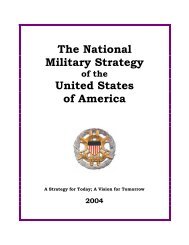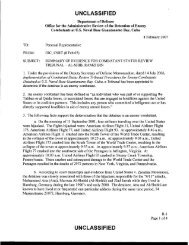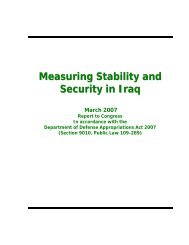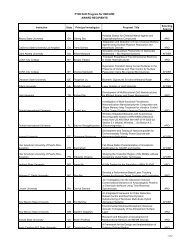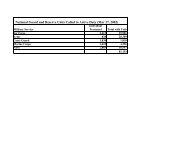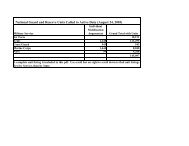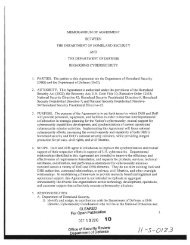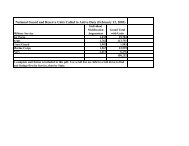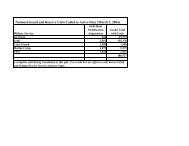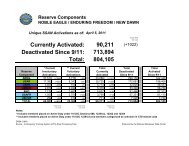Report - United States Department of Defense
Report - United States Department of Defense
Report - United States Department of Defense
Create successful ePaper yourself
Turn your PDF publications into a flip-book with our unique Google optimized e-Paper software.
UNCLASSIFIED<br />
The education system has expanded to provide vocational training to young adults and literacy<br />
training to Afghans <strong>of</strong> all ages. More than 27,000 students are enrolled at 62 Afghan government<br />
Technical and Vocational Education and Training schools, which is an increase <strong>of</strong> approximately<br />
11,000 students and 14 schools from the prior school year. A number <strong>of</strong> issues remain that<br />
impact access to and quality <strong>of</strong> basic education, including: the absence <strong>of</strong> textbooks and school<br />
supplies for multiple content areas the lack <strong>of</strong> infrastructure in some locations; and the demand<br />
for more trained education staff.<br />
The Ministry <strong>of</strong> Higher Education (MoHE) continues to face a shortage <strong>of</strong> space (i.e.,<br />
classrooms, labs, dorm facilities), qualified instructors, and student program options, and faces a<br />
youth bulge as Afghan secondary-school graduates continue to increase annually and are<br />
projected to continue for the next 10 years. Although progress has been made, the pace <strong>of</strong><br />
material acquisition, recruitment <strong>of</strong> teachers, and support operations for schools must increase in<br />
order for MoHE to be at the necessary level <strong>of</strong> capacity and capability to improve and maintain<br />
an effective education system.<br />
The focus on education by Afghan families varies throughout the country and by tribe. When<br />
families do not fully understand and accept education as a right as outlined in Afghan law, males<br />
not enrolled in school will be more vulnerable to illegal activities, and the implications are even<br />
starker for women and girls as they continue to be marginalized and deprived <strong>of</strong> opportunities. In<br />
the past, insurgents have used education as a weapon against the people. When the insurgents<br />
terrorized communities and blocked access to education to leverage control, they threatened the<br />
stability and security <strong>of</strong> the area. The reporting <strong>of</strong> death threats to teachers for delivering<br />
instruction and to parents for sending their children to school, and the exercise <strong>of</strong> force to close<br />
schools, negated progress made by the village, district, or provincial education leaders and<br />
development <strong>of</strong> the future <strong>of</strong> Afghanistan.<br />
4.5: WOMEN IN AFGHANISTAN 38<br />
Overall, circumstances for Afghan women and girls have improved significantly since 2001;<br />
gains remain tenuous, however, and civil society organizations are concerned progress will be<br />
reversed and rights bargained away in the peace process. Many Afghan women view a possible<br />
reconciliation process with the Taliban skeptically and with legitimate concerns as to what peace<br />
talks might mean for the progress they have made over the last 11 years. The USG takes these<br />
concerns seriously and recognizes that promoting security for Afghan women and girls must<br />
remain a top foreign policy priority<br />
Women face entrenched societal discrimination and limits to their freedom. Violence against<br />
women is widespread but underreported. Recent ISAF efforts to get Afghan authorities to<br />
respond to complaints by women have resulted in an increase in reporting <strong>of</strong> such violence.<br />
However, large gaps remain in our understanding <strong>of</strong> this problem, and major challenges exist in<br />
Afghan attempts to address it.<br />
38 This section, along with the Women in the ANSF section, is submitted consistent with section 1223 <strong>of</strong> the National <strong>Defense</strong> Authorization Act<br />
for Fiscal Year 2013.<br />
170



